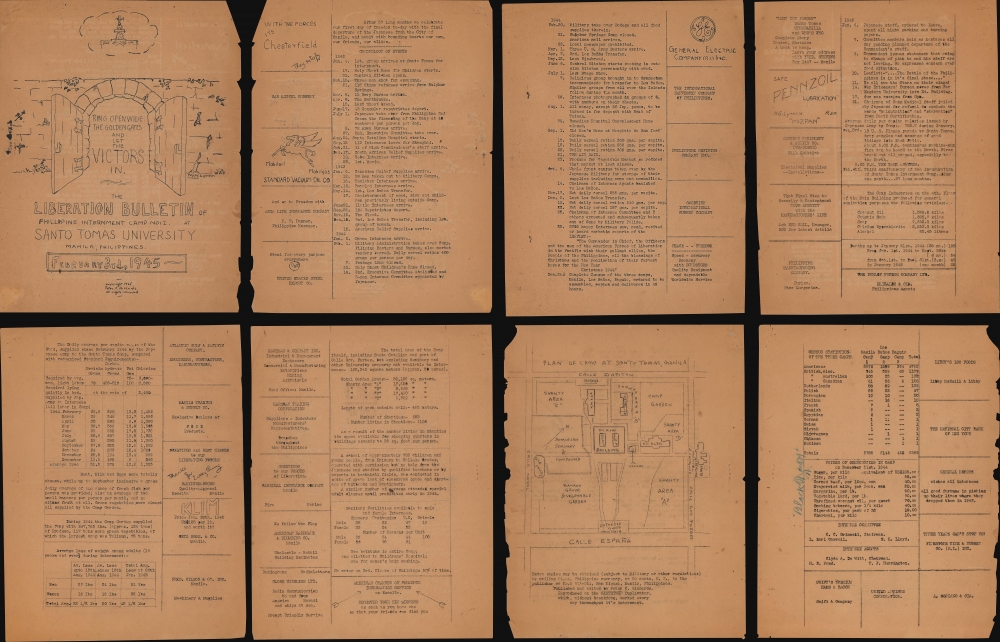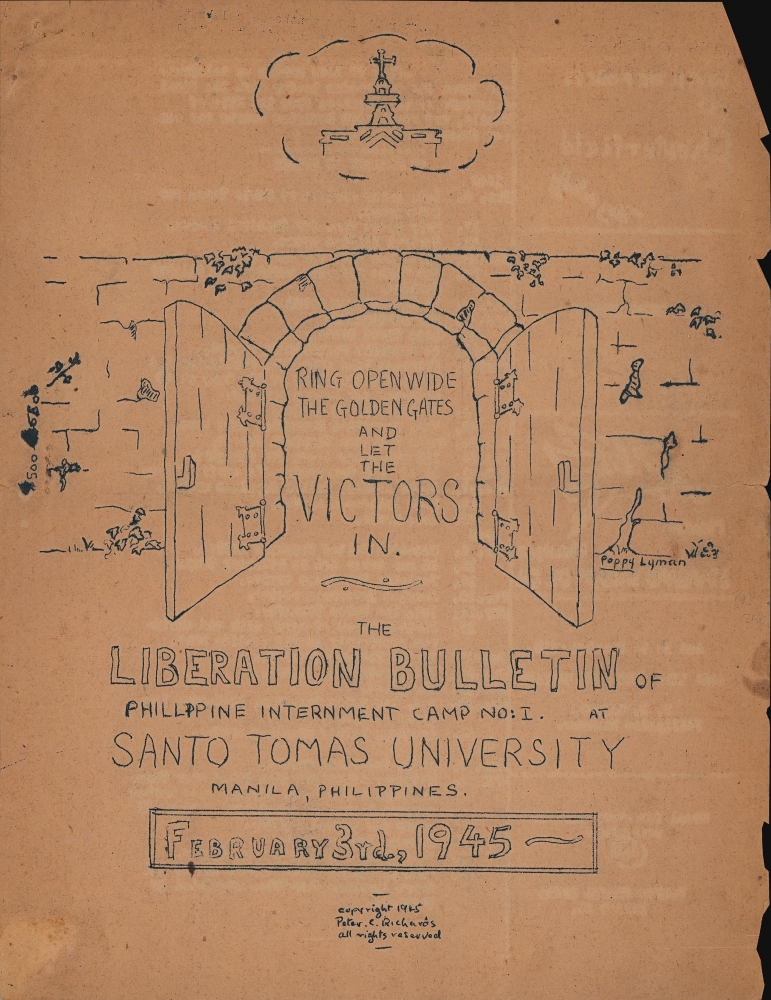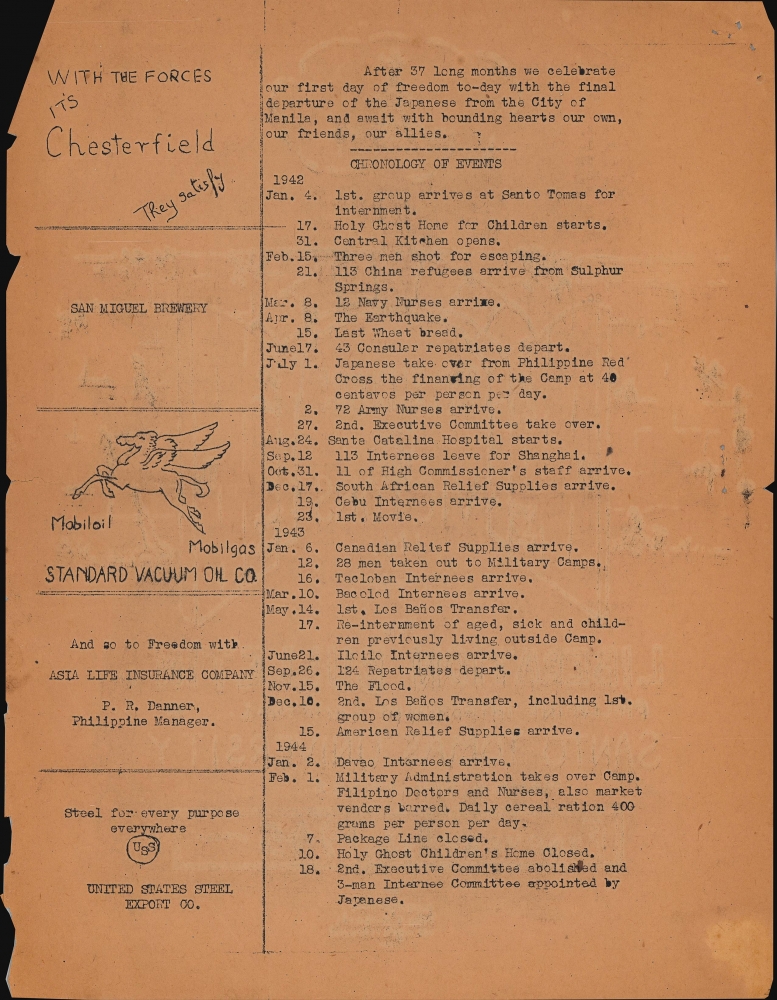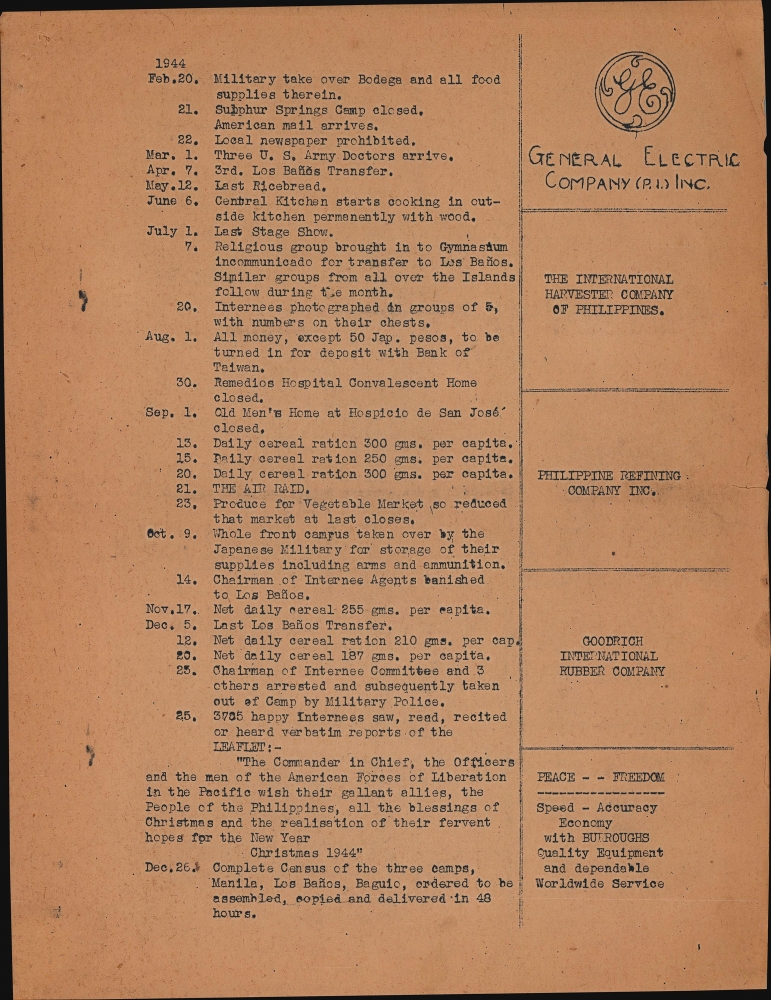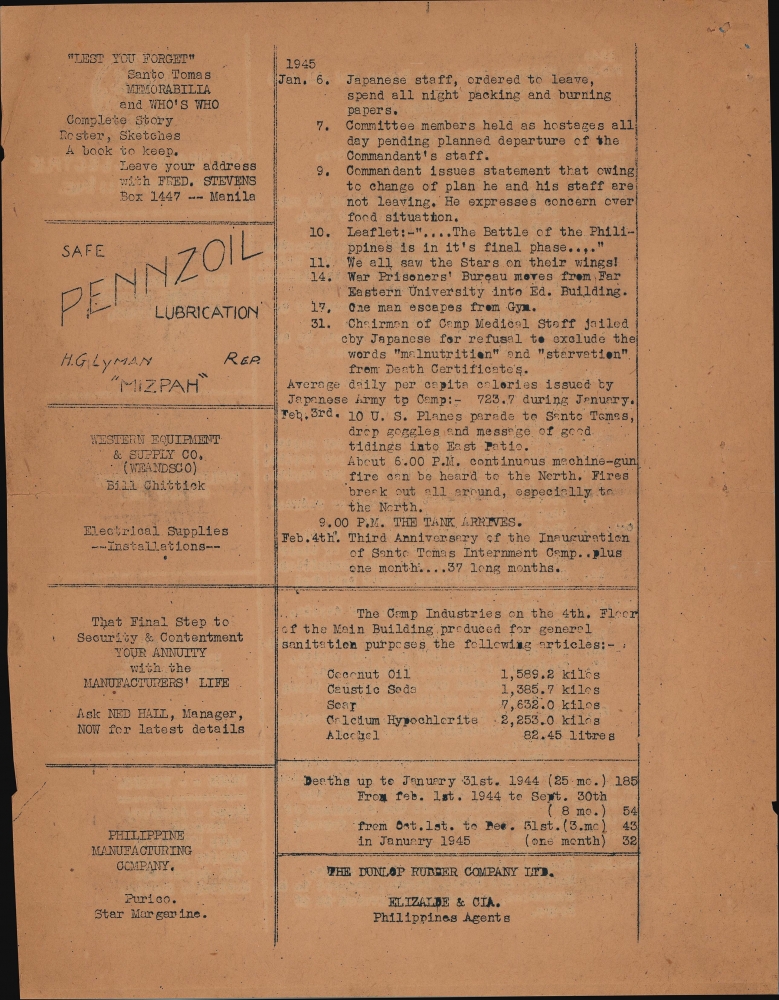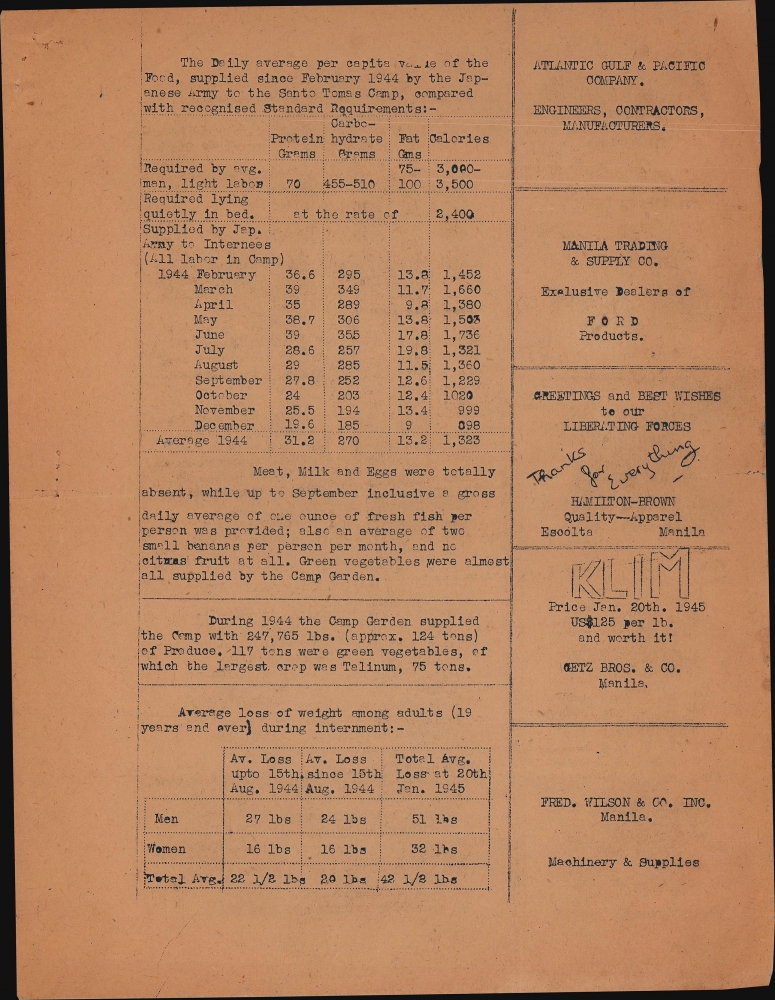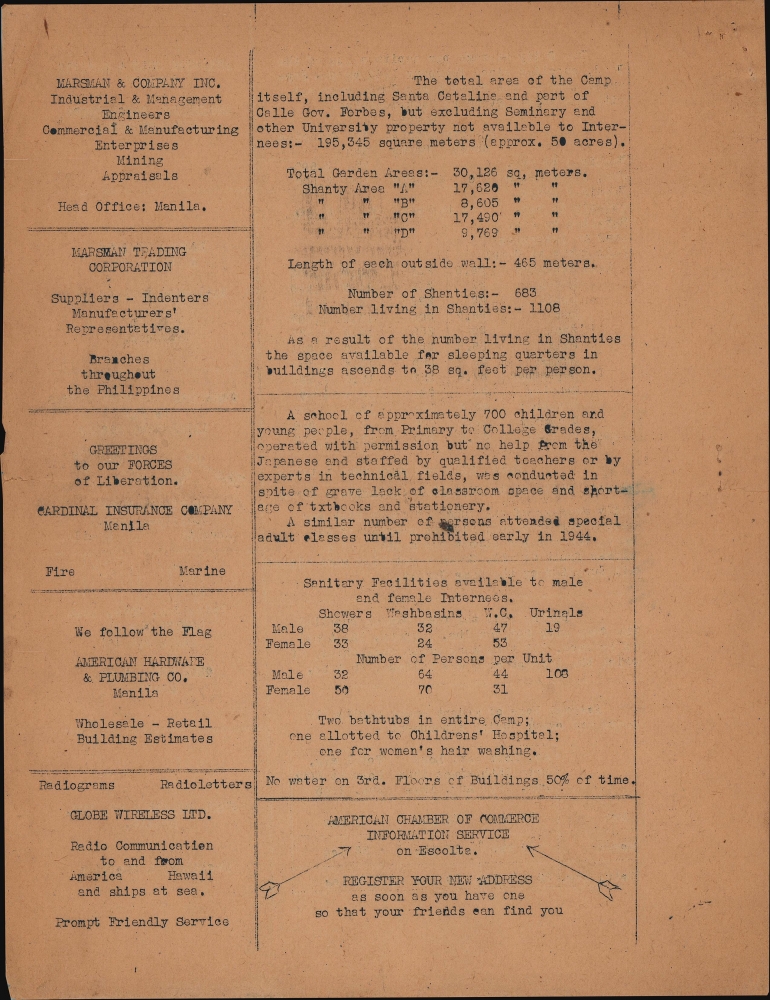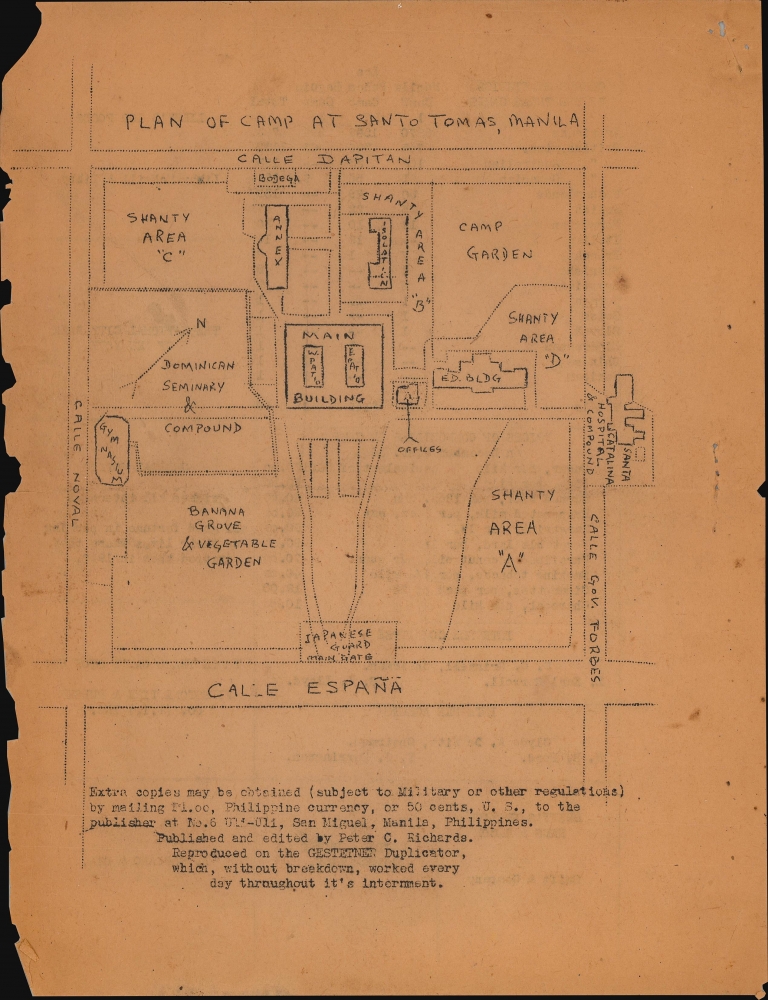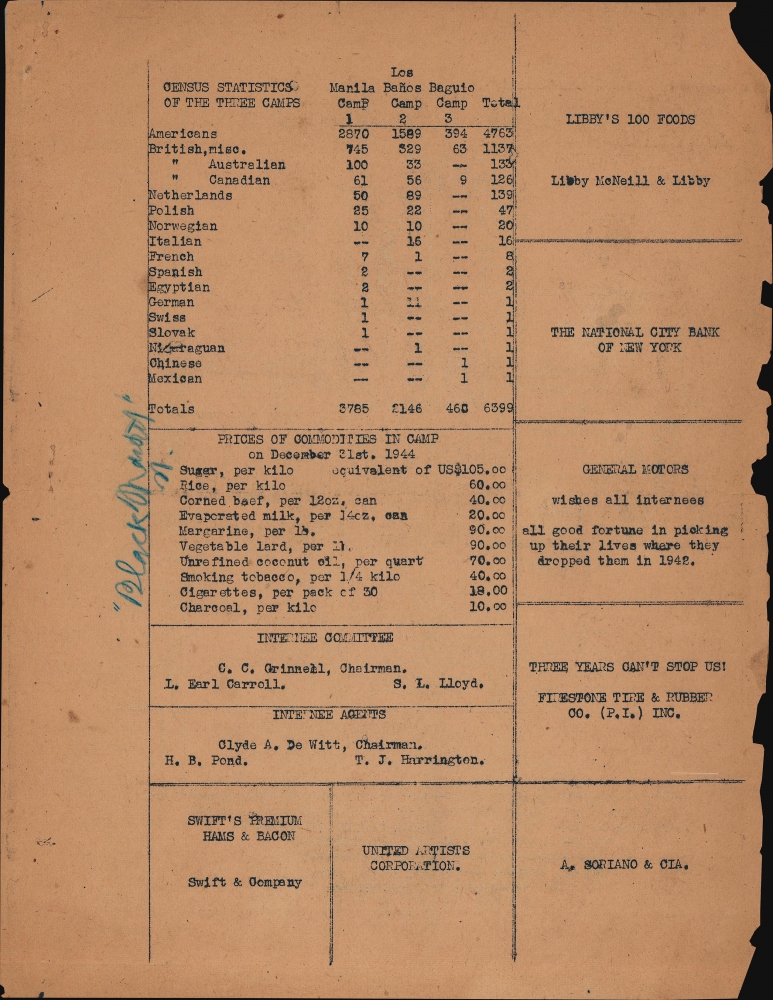Digital Image: 1945 Richards 'Liberation Bulletin' of Santo Tomas Internment Camp, Philippines
SantoTomasLiberationBulletin-richards-1945_d
Title
1945 (dated) 11 x 8.5 in (27.94 x 21.59 cm)
Description
FOR THE ORIGINAL ANTIQUE MAP, WITH HISTORICAL ANALYSIS, CLICK HERE.
Digital Map Information
Geographicus maintains an archive of high-resolution rare map scans. We scan our maps at 300 DPI or higher, with newer images being 600 DPI, (either TIFF or JPEG, depending on when the scan was done) which is most cases in suitable for enlargement and printing.
Delivery
Once you purchase our digital scan service, you will receive a download link via email - usually within seconds. Digital orders are delivered as ZIP files, an industry standard file compression protocol that any computer should be able to unpack. Some of our files are very large, and can take some time to download. Most files are saved into your computer's 'Downloads' folder. All delivery is electronic. No physical product is shipped.
Credit and Scope of Use
You can use your digial image any way you want! Our digital images are unrestricted by copyright and can be used, modified, and published freely. The textual description that accompanies the original antique map is not included in the sale of digital images and remains protected by copyright. That said, we put significant care and effort into scanning and editing these maps, and we’d appreciate a credit when possible. Should you wish to credit us, please use the following credit line:
Courtesy of Geographicus Rare Antique Maps (http://www.geographicus.com).
How Large Can I Print?
In general, at 300 DPI, you should at least be able to double the size of the actual image, more so with our 600 DPI images. So, if the original was 10 x 12 inches, you can print at 20 x 24 inches, without quality loss. If your display requirements can accommodate some loss in image quality, you can make it even larger. That being said, no quality of scan will allow you to blow up at 10 x 12 inch map to wall size without significant quality loss. For more information, it is best consult a printer or reprographics specialist.
Refunds
If the high resolution image you ordered is unavailable, we will fully refund your purchase. Otherwise, digital images scans are a service, not a tangible product, and cannot be returned or refunded once the download link is used.
Cartographer
Peter Clifton Richards (September 25, 1909 - 1992) was a British salesman and news correspondent as well as a civilian internee at the Santo Tomás Internment Camp in Mania. Born in Streatham, Surrey, his father served in the HM Consular Service, with postings to Grand-Bassam, Ivory Coast, as Vice-Consul (where he was posted when Richards was born), Consul and Deputy Commissioner for the South Pacific, Consul at Callao, Peru, and Consul-General in Chicago. Richards' parents sent him to Sherborne Preparatory School in 1919 and he attended Sherborne School from September 1923 until July 1927. After graduating from Sherborne, Richards started working for the Anglo-South American Bank. He worked for the bank until 1935 when he became a salesman for D. Gestetner Ltd, which manufactured duplicating machines, and Gestetner sent him to Singapore and Manila to sell their machines. He met Dolores Opisso while working in Manila, whom he married. Richards was in the Philippines on December 7, 1941, when the Japanese attacked Pearl Harbor, Hawaii, pulling the United States into World War II. The Japanese attacked the Philippines (then an American Commonwealth) on December 8 and entered Manila on January 2, 1942. Both Peter and Dolly were interned at the Santo Tomás Internment Camp in Manila along with thousands of other 'enemy civilians'. While interned at Santo Tomás, Richards was in charge of using the camp's Gestetner machine to reproduce camp orders, regulations, and forms, all under the watchful eye of the Commandant, thus ensuring that Richards did not print any anti-Japanese propaganda. Surprisingly, the Japanese allowed Richards to print some other documents on the machine, including a beginning Spanish booklet to teach children in the camp Spanish, and the occasional camp newsletter. It was with this Gestetner machine that Richards printed his eight-page 'Liberation Bulletin' on the day of the camp's liberation, February 3, 1945. After liberation, Peter and Dolly left Manila on April 14, 1945, and arrived on May 25, 1945, in Liverpool. Richards joined the Reuters News Agency in August 1945 and he and Dolly left for Manila in July 1947 where he was Reuter's Manila Correspondent. More by this mapmaker...

